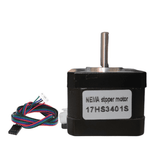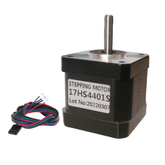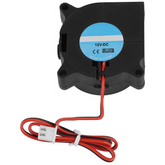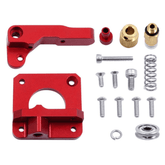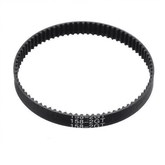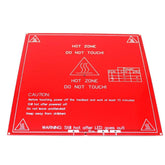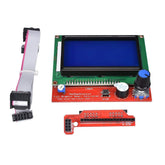Different Types of 3D Printer
Summary
3D printers are making it possible for anyone to turn their digital designs into real, physical objects right from their desktop. Whether you’re a hobbyist, a student, or an innovator, 3D printing opens up a world of creative possibilities.
But even today there are many people who still find 3D printing mysterious or intimidating. Why? Because the technology can seem complex, and the endless options can be overwhelming for beginners.
If you’ve ever wondered how 3D printing really works, what you can make with it, or how to get started, you’re in the right place. This blog will break down the basics of 3D printing, share practical tips, and help you unlock the full potential of this exciting technology.

What is 3D Printing?
Suppose you have an idea for creating a physical object, like a custom phone holder, a unique keychain, or a specific component for a project. 3D printing is a technology that allows you to turn that digital idea into a real-world object, built layer by layer.
It's a process of making three-dimensional solid objects from a digital file. You can think of it as constructing something in layers, where the 3D printing machine uses materials like plastic, resin, or sometimes metal, to build your design from the bottom up, one thin layer at a time.

This method is often referred to as "additive manufacturing" because material is added to create the object, unlike traditional "subtractive" methods where material is removed. This approach allows for the creation of complex shapes that might be difficult or costly to produce using other techniques.
How does 3D Printing Work?
The 3D printing process starts with a digital design, which is made using special computer software or downloaded from online libraries. This design is then sent to the 3D printer, which reads the file and prepares to build the object.
The printer uses materials like plastic filament, liquid resin, or powder, depending on the type of machine.
The 3D printing machine builds the object layer by layer, adding one thin slice on top of another. Each layer sticks to the one below it, slowly forming the complete shape. The printer follows the design exactly, so even complex shapes can be made easily.
Once the printing is finished, sometimes a little cleaning or finishing is needed, like removing extra material or supports. In this way, 3D printing lets you create custom objects quickly and without much effort.
read more : 5 Tips to Start Designing with your 3D Printer
Types of 3D Printers
There isn't just one kind of 3D printer; various types of 3D printing technologies exist.
Each type of printer operates differently, utilizes different materials, and is suited for particular applications.
Some of the most frequently mentioned types include FDM (Fused Deposition Modelling), SLA (Stereolithography), SLS (Selective Laser Sintering), DLP (Digital Light Processing), and MJP (Multijet Printing). Each has its own characteristics and method of constructing objects.
We will now explore these different types of 3D printers in more detail, looking at how each one functions, the materials they use, and their specific applications.
Fused Deposition Modeling (FDM)

Let us begin with Fused Deposition Modeling, or FDM, which is the most common type you will find in most schools, colleges, and even homes. FDM printers are quite popular because they are affordable and easy to use, making them perfect for beginners and students.
Think of it like a smart glue gun controlled by a computer. The printer takes a plastic wire, known as filament usually PLA, which is simple to use, or ABS, which is tougher—and melts it in a hot nozzle.
Then, it carefully draws your design on a flat surface, one thin layer at a time. Slowly, your object takes shape as each layer is added on top of the last. FDM printers are very good for making quick models, prototypes, and simple tools.
However, you may notice lines on the surface, so the finish is not always very smooth. But for learning and experimenting, FDM is an excellent choice.
Advantages
- FDM printers are budget-friendly, which makes them accessible for students, hobbyists, and professionals.
- The technology is easy to use and does not require advanced technical skills, so beginners can start quickly
- There are many types and colours of filaments available, such as PLA, ABS, and even special blends that look like wood or metal.
- FDM printers can be used for fast prototyping, which is helpful for quick testing and design validation.
Disadvantages
- The finish of the printed objects may not be very smooth without extra post-processing. Sometimes it might have visible layer lines and a rough surface.
- Finer details can be difficult to print with FDM printers, and large prints may have weaker layer adhesion, which makes FDP printers less suitable for highly intricate or strong parts.
Stereolithography (SLA)

Now, let us look at Stereolithography, or SLA. This 3D printer type is known for its ability to create objects with very smooth surfaces and fine details. Instead of using plastic wire, SLA printers use a special liquid resin that hardens when exposed to UV light.
A precise laser draws each layer on the surface of the resin, and wherever the laser touches, the resin solidifies instantly. The platform then moves slightly, and a new layer of resin is added. This process continues until your object is complete.
The results are impressive, SLA 3d printer can produce models with sharp details, making them ideal for miniatures, jewellery, or dental models.
However, working with liquid resin can be a bit messy, and you need to wash and cure your prints after printing. Also, the resin is usually more expensive than FDM filament, and some resins can be brittle.
Advantages
- SLA printers can produce objects with very smooth surfaces and sharp details.
- They are excellent for making detailed models, jewellery, and dental parts.
- The technology is suitable for printing small, intricate designs.
- SLA prints are often used for professional prototypes and display pieces.
Disadvantages
- Working with liquid resin can be messy and requires extra steps like washing and curing.
- Resin materials are usually more expensive, and some standard resins can be brittle.
Selective Laser Sintering (SLS)

Next, let us talk about Selective Laser Sintering, or SLS. SLS 3D printers are mostly used in professional and industrial settings because they are very good at making strong and functional parts. Unlike FDM or SLA, SLS uses a fine powder, usually nylon, instead of filament or liquid resin.
The sls 3d printing spreads a thin layer of this powder on the build area. Then, a powerful laser carefully fuses the powder together where the object needs to be solid.
After each layer, the platform moves down, a new layer of powder is added, and the process repeats. One big advantage of SLS is that the extra powder supports your object while printing, so you can make complex shapes without needing extra support structures.
The finished parts are strong and suitable for real-world use. However, SLS printers and materials are more expensive, and the surface finish is usually a bit grainy.
Advantages
- SLS printers can create strong and functional parts suitable for real-world applications.
- The technology allows for printing complex shapes and internal features without extra supports.
- SLS is ideal for making prototypes, end-use components, and small batches of parts.
- The finished objects are often durable and reliable.
Disadvantages
- SLS machines and materials are generally more expensive than FDM or SLA.
- The surface of SLS prints is usually grainy and not as smooth as SLA prints.
Dual Light 3D Printing (DLP)

Digital Light Processing, or DLP, is a 3D printing technology which is known for its speed and precision. These type of printers use a special liquid resin that hardens when exposed to UV light.
The key feature of DLP is that it uses a digital projector, which shines an entire layer of light at once onto the resin, curing it quickly and accurately. This process is repeated layer by layer, as the build platform moves up or down, until the object is fully formed.
DLP is popular for making detailed models, jewellery, dental parts, and prototypes, as it can produce very fine details and smooth surfaces.
DLP printers can also be used for working with a wide range of resins, each offering different properties for various applications.
However, DLP printers and resins can be more expensive than basic FDM printers, and post-processing, such as cleaning and additional curing, is usually required.
Advantages
- DLP printers offer high accuracy and very smooth surfaces, making them ideal for detailed and intricate models.
- The process is faster than many other resin-based methods because it cures entire layers at once.
- DLP technology supports a wide variety of resins, allowing for different material properties and applications.
- The digital projector ensures consistent quality and long-lasting performance.
Disadvantages
- The cost of DLP printers and resins is generally higher than other types like FDM.
- Post-processing steps, such as cleaning and further UV curing, are needed to achieve the best results.
MultiJet 3D Printing (MJP)

MultiJet Printing, or MJP, is a 3D printing process that works much like a regular inkjet printer, but instead of ink, it uses tiny droplets of liquid photopolymer or wax.
These droplets are deposited layer by layer onto the build platform, and each layer is immediately hardened by UV light. MJP printers can use multiple printheads, allowing them to print with different materials and colours at the same time.
This makes it possible to create complex parts with both rigid and flexible sections, or even transparent and coloured features in a single print.
The surface finish is very smooth, and the level of detail is extremely high, which is why MJP is often used for prototypes, dental models, jewellery, and intricate engineering parts. Support materials are usually dissolvable, which makes post-processing easy and safe for delicate features.
Advantages
- MJP printers deliver very smooth surfaces and high-resolution details, suitable for both functional and display models.
- Multiple materials and colours can be printed together, enabling complex and multi-functional parts.
- Dissolvable supports make it easy to clean delicate and intricate designs without damage.
- The process is suitable for both small prototypes and larger production runs.
Disadvantages
- MJP printers and materials can be costly compared to simpler 3D printing methods.
- The printing speed may be slower for very large or highly detailed parts, and post-processing is required to remove supports.
Popular 3D Printing Machines and Costs Based on the Types and Their Cost
Here are some popular models of 3D printing machines:
FDP 3D Printer
Fracktal Works Snowflake 3D Printer
The Fracktal Works Snowflake FDM 3D printer is a user-friendly desktop printer designed for reliable everyday use. Its sturdy metal build and direct drive extruder make it suitable for both beginners and experienced users.
Features like auto bed-leveling, a heated bed, and a filament sensor help ensure smooth printing. The magnetic print sheet makes removing finished prints easy, while the simple LCD interface allows for quick setup and operation. It is priced at around Rs 59,000.

Specifications:
- Build Volume: 200 x 200 x 200 mm
- Technology: Fused Deposition Modeling (FDM)
- Supported Materials: PLA, PETG, ABS, eFLEX, ASA, Wood, Metal
- Features: Auto bed-leveling, filament runout sensor, heated bed, magnetic print sheet
- Display: 3-inch LCD with dial knob
SLA 3D Printer
Formlabs Form 4
The Formlabs Form 4 is a professional desktop SLA 3D printer. known for its high precision and reliability. The Form 4 is mainly used for dental, jewelry, and engineering applications due to its accuracy and broad material compatibility.
It uses automated resin handling, a heated resin tank for consistent results, and a user-friendly touchscreen interface.
The machine also supports remote monitoring and control, which makes it suitable for both individual professionals and production environments. It is priced at around Rs. 3,00,000.

Specifications:
- Build Volume: 145 x 145 x 185 mm
- XY Resolution: 25 microns
- Layer Thickness: 25–300 microns
- Connectivity: Wi-Fi, USB, Ethernet
- Dimensions: 405 x 375 x 530 mm
SLS 3D Printer
Sinterit Lisa
The Sinterit Lisa is a compact desktop SLS 3D printer designed for professional use. It employs a laser to sinter nylon powder layer by layer, producing strong and functional parts without the need for support structures.
Sinterit Lisa is popular for creating durable prototypes, end-use parts, and complex geometries with excellent mechanical properties. Its user-friendly software and interface make it accessible for both engineers and designers.
The Lisa is suitable for small batch production and functional prototyping, offering a wide selection of nylon materials. It is priced around Rs. 3,40,000.

Specifications:
- Build Volume: 150 x 200 x 150 mm
- Laser Power: 10 W CO₂ laser
- Layer Thickness: 0.075–0.15 mm
- Materials: Nylon powders (PA12, PA11, etc.)
- Connectivity: USB, Ethernet
- Dimensions: 550 x 550 x 850 mm
DLP 3D Printer
Raise3D DF2
The Raise3D DF2 is a professional DLP 3D printer engineered for high precision and fast production. It utilizes a digital projector to cure entire layers of photopolymer resin simultaneously, enabling the quick creation of detailed and smooth models.
The DF2 is ideal for applications that require fine detail, such as dental models, jewelry prototypes, and engineering parts.
It features a large build volume for a DLP printer, a user-friendly touchscreen, and remote monitoring capabilities, making it suitable for both prototyping and small-scale manufacturing. It is priced around Rs. 3,40,000.

Specifications:
- Build Volume: 192 x 120 x 200 mm
- XY Resolution: 50 microns
- Layer Thickness: 25–100 microns
- Materials: Various photopolymer resins
- Connectivity: Wi-Fi, USB, Ethernet
- Dimensions: 400 x 400 x 600 mm
MJP 3D Printer
ProJet MJP 3600
The ProJet MJP 3600 Dental is a MultiJet Printing (MJP) 3D printer tailored for dental professionals. It uses multiple print heads to jet layers of photopolymer material, which are then cured by UV light.
This technology allows for high-resolution prints with smooth surfaces and the ability to print multiple materials and colors in a single build. The printer is widely used for dental models, surgical guides, and orthodontic appliances.
It features dissolvable support materials for easy post-processing and is designed for fast, reliable production in dental labs. It costs around Rs. 11,15,000.

Specifications:
- Build Volume: 98 x 78 x 55 mm
- XY Resolution: 750 x 750 dpi
- Layer Thickness: 16 microns
- Materials: Photopolymer resins
- Connectivity: USB, Ethernet
- Dimensions: 600 x 600 x 600 mm
Conclusion
3D printing is a powerful and flexible technology that allows anyone to turn creative ideas into real objects, layer by layer. With different types of 3D printers like FDM, SLA, SLS, DLP, and MJP, there is a suitable option for every need, depending on whether you want to make simple models, detailed designs, or strong functional parts.
The process is beginner-friendly and does not require advanced skills to get started. While each method has its own strengths and limitations, the main advantage of 3D printing is the freedom to create complex shapes quickly and with less waste compared to traditional methods. With a little practice and imagination, anyone can use 3D printing to bring their ideas to life and explore endless possibilities.
If you appreciate our work don't forget to share this post and leave your opinion in the comment box.
Please do check out other blog posts about Popular electronics
Make sure you check out our wide range of products and collections (we offer some exciting deals!)



